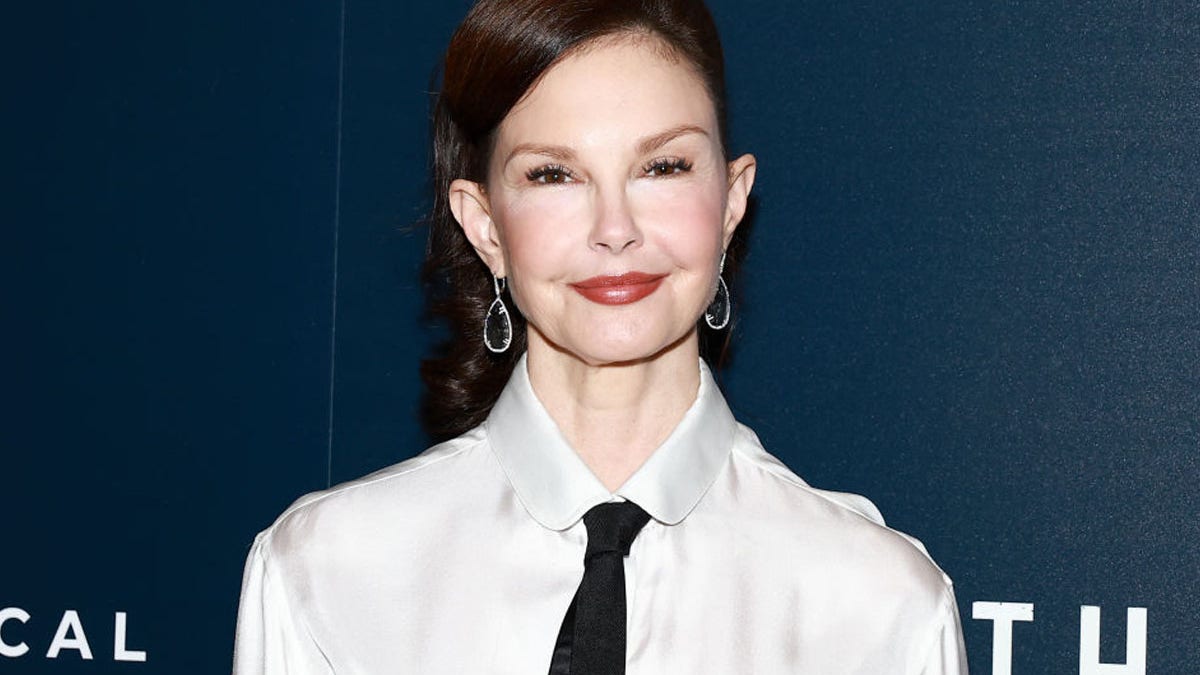[ad_1]
Headaches are one of the most common medical conditions, with 96% of people having them at least once in their lives, according to the Cleveland Clinic.
The same source noted that Around 40% of people around the world experience what is called “Tension headaches” and about 10% suffer from migraines.
There are more than 150 types of headaches, ranging from mild irritation to debilitating pain.
‘I feel like a migraine is coming on. What should I do immediately?’: Ask a Doctor
For some people, headaches can be misdiagnosed.
Actress Ashley Judd recently shared on Instagram that her “massive headaches” had been misdiagnosed for eight years.

Headaches are one of the most common medical conditions, with 96% of people experiencing them at least once in their lives. (Istock)
“For those eight miserable years, I received treatment at some of the best medical institutions. With headache medicine like I don’t have,” she posted on Instagram in October.
Her doctor eventually diagnosed her headaches as a migraine state. which is a migraine that lasts more than 72 hours
What is a headache?
A headache is a pain in the head, neck, or face, often referred to as a pressure sensation, that varies in location, frequency, and severity. According to the National Institutes of Health
“For those eight miserable years, I was treated … with headache medicine that I didn’t have.”
“Headache is one of the most common symptoms that many people experience. People tend to dismiss it as a minor inconvenience,” Dr. Fred Cohen, assistant professor of medicine and neurology at the Icahn School of Medicine at Mount Sinai in New York, told Fox Digital News.
There are two main types: Primary type, which is caused by overactivity or dysfunction in pain-sensitive areas of the head. or secondary type which congenital disease causes pain Cleveland Clinic added.

Actress Ashley Judd recently shared on Instagram that her “massive headaches” had been misdiagnosed for eight years. (Getty Images)
Some types of headaches can be a sign of a more serious condition, such as a brain tumor or aneurysm, especially if the pain comes on suddenly or is severe. According to Cohen
“This emphasizes the importance of a thorough assessment to differentiate between primary and secondary headache causes. to ensure proper treatment and management,” he said.
6 common types of headaches
According to Cohen, the three most common types are tension headaches, migraines, and cluster headaches.
1. Tension headache
“Tension headaches are the most common type. and is what most people consider to be It’s basically a ‘headache,’” says Cohen.
Studies have found that red wine headaches may be due to this interesting culprit.
Many people describe this pain as a band around the head. This is usually caused by stress and muscle tension.
Treatment typically focuses on addressing the underlying cause, such as stress reduction or physical therapy. But prescription medications may be used if headaches occur frequently, says Cohen.
2. Migraine
Research shows that migraines disproportionately affect women – up to 18% in the United States – and are the leading cause of disability in women ages 18 to 50 worldwide.
“Migraine is considered neurological diseaseThere are many steps during an attack,” said Cohen.

Migraines disproportionately affect women – up to 18% in the United States – and are the leading cause of disability in women ages 18 to 50 worldwide. (Istock)
People may experience warning symptoms before a headache, such as excessive yawning, increased hunger, or watery eyes.
“Some individuals also experience auras. This is a neurological phenomenon that can include visual disturbances such as zigzag lights or blind spots. or sensory changes, such as tingling or numbness,” Cohen points out.
Head on over to Migraine as experts reveal their secrets to finding relief from those headaches. ‘Makes the body weak’
Migraine causes “Throbbing headache. or severe headache with symptoms of sensitivity to light or sound and sometimes nausea,” said Dr. Timothy A. Collins, chief of headache and pain at Duke University School of Medicine in Durham. North Carolina
These symptoms typically last from 15 minutes to an hour. But migraine pain may last longer. From four hours to three days Cohen noted
Status migraine is defined as a migraine that lasts for more than 72 hours.
When attacks last longer than this, it’s called “state migrainenosus,” which is what Judd experienced.
“Unfortunately, many People misunderstand that migraines are “Regular headaches” and are not aware of the many effective treatment options available Including daily medication, dietary supplements, monthly injections. and even Botox injections,” Cohen told Fox News Digital.
3. Cluster headaches
A rare type of cluster headache that causes severe pain around one eye several times a day, the condition is “very disabling,” according to Collins.
Acute pain accompanied by red eyes, watery eyes, red face, and nasal congestion.
Cohen noted that the pain can be so severe that it can be mistaken for a brain aneurysm.

“Cluster headaches usually last 15 minutes to 3 hours and often occur in cycles. for days or weeks,” experts said. (Istock)
“Cluster headaches usually last 15 minutes to three hours and tend to occur in cycles lasting days or weeks,” he says.
Cluster headaches are often misdiagnosed as migraines.
Hangover Cure: Some say this remedy is the secret to relieving symptoms.
The main difference between the two is that cluster headaches tend to occur in cycles. While many migraine sufferers experience headaches for a few days in a row once a month, Collins said.
Cluster headache treatment options include medication to stop attacks and preventative therapy to reduce the frequency of cycles. According to Cohen
4. Recurrent headaches
People who have headaches often eat Over-the-counter (OTC) medicinessuch as acetaminophen or ibuprofen to “cancel out” the headache, according to Healthline.
Click here to subscribe to our health newsletter.
But experts warn that frequent use of these drugs can cause more frequent headaches by causing withdrawal symptoms when not taken. The same source stated

Experts warn that frequent use of these drugs It may cause more frequent headaches by causing withdrawal symptoms when not taken. (Istock)
People can get headaches if they drink a lot of caffeine and suddenly miss their morning coffee or suddenly come off their medication.
5. Sinus headaches
Sinus congestion from allergies or infections can cause pain in the front of the head in the sinuses, according to Healthline.
The pain usually goes away after the stuffy nose clears up.
6. Headache from exertion
Vigorous exercise can trigger this type of headache by increasing blood flow to the brain, according to Healthline.
CLICK HERE TO GET THE FOX NEWS APP
Symptoms usually disappear within minutes to hours. But if it lasts longer than several hours or has never had symptoms before It is best to see a doctor on the advice of a specialist.
When to see a doctor
Experts say a “normal” headache doesn’t cause loss of consciousness, confusion, slurred speech, or weakness in one arm or leg. All of which can be signs of a stroke.

People should see a doctor if they have a headache that has a sudden change in intensity or comes on suddenly. (Istock)
People who experience any warning signs You should immediately see your health care provider or call 911 to rule out a more serious medical condition.
– Worst headache of your life
– Headache that has a sudden change in intensity or comes on suddenly.
– Headaches and vision problems (such as double vision)
– Fainting or loss of consciousness with headache
– Fever and stiff neck There is nausea and vomiting along with a headache.
– Headache after a head injury
– Headache immediately after lifting weights, exercising, or engaging in sexual activity.
See more health articles at www.foxnews.com/health
Fox News Digital has reached out to Ashley Judd for comment.
[ad_2]
Source link



